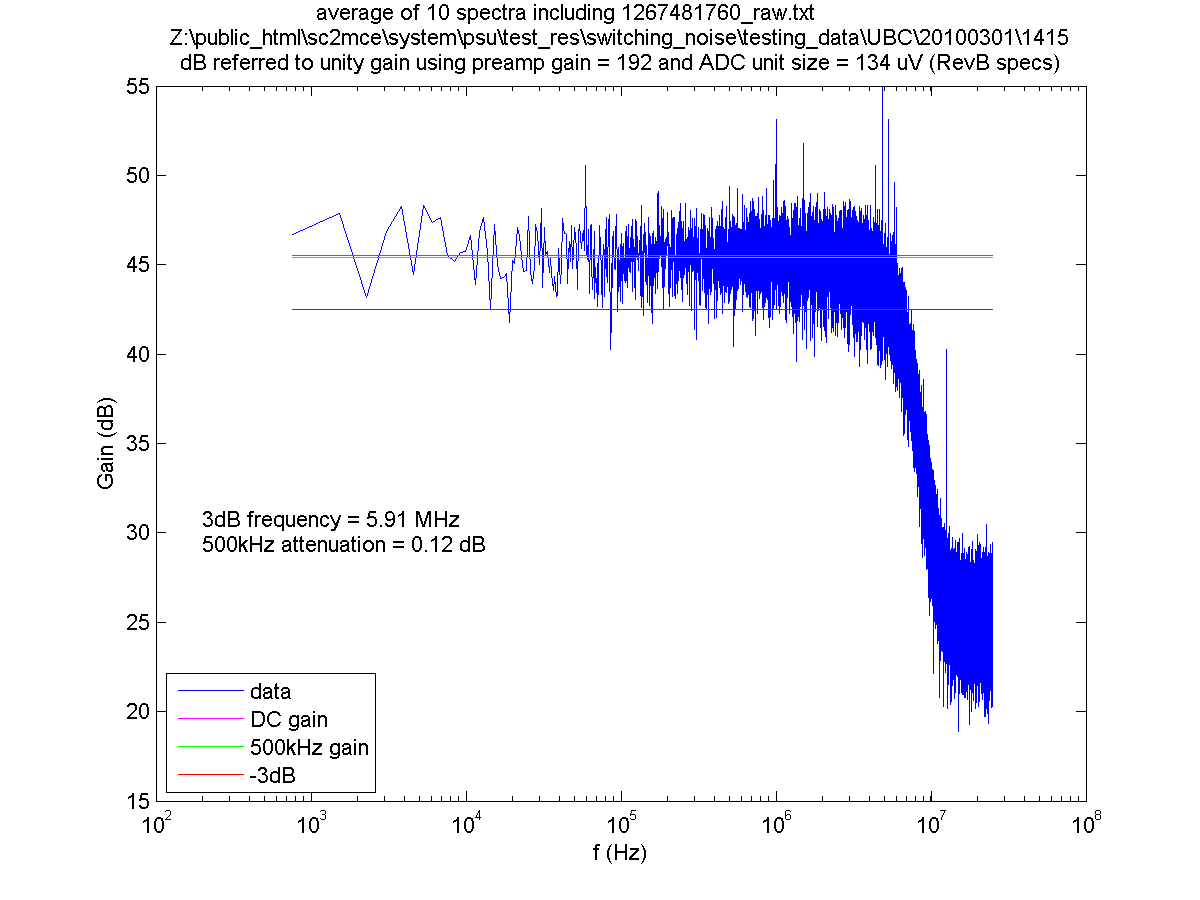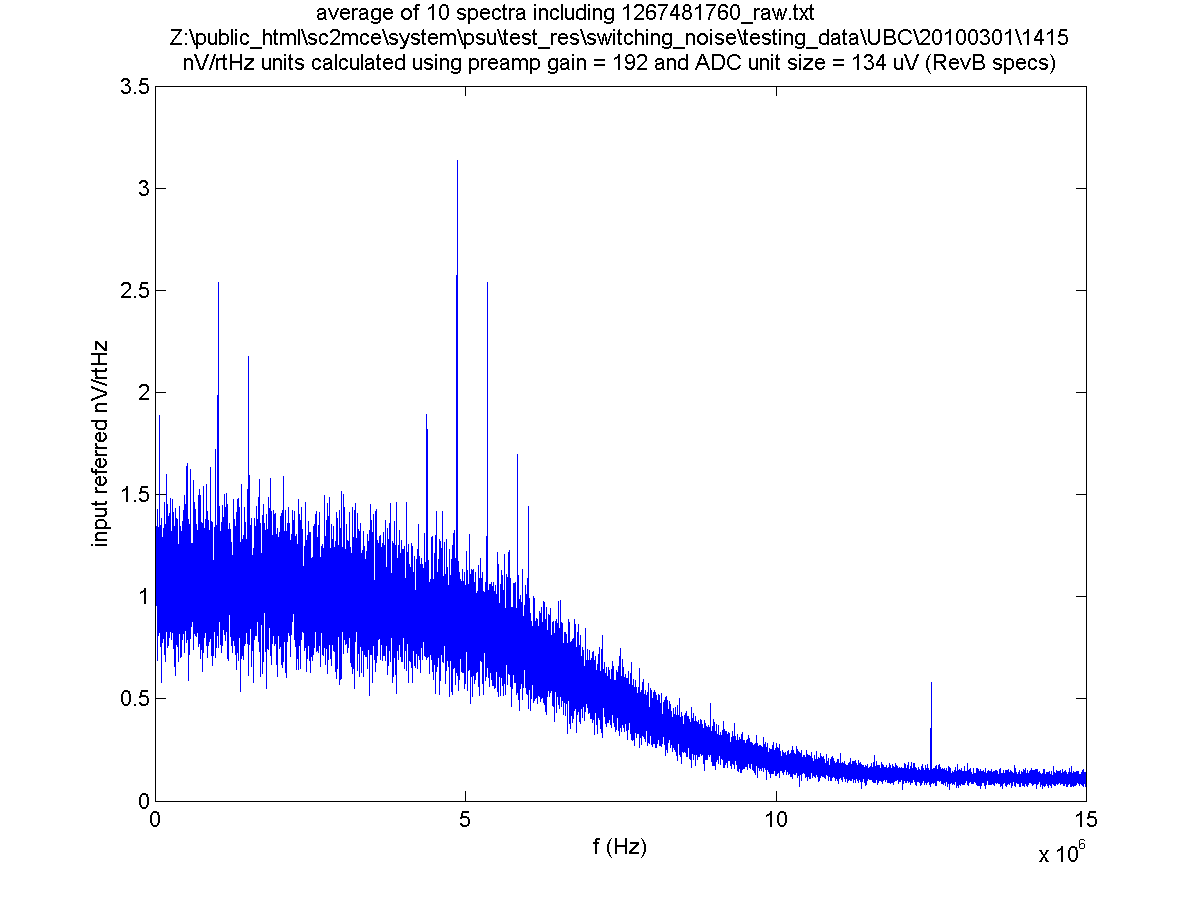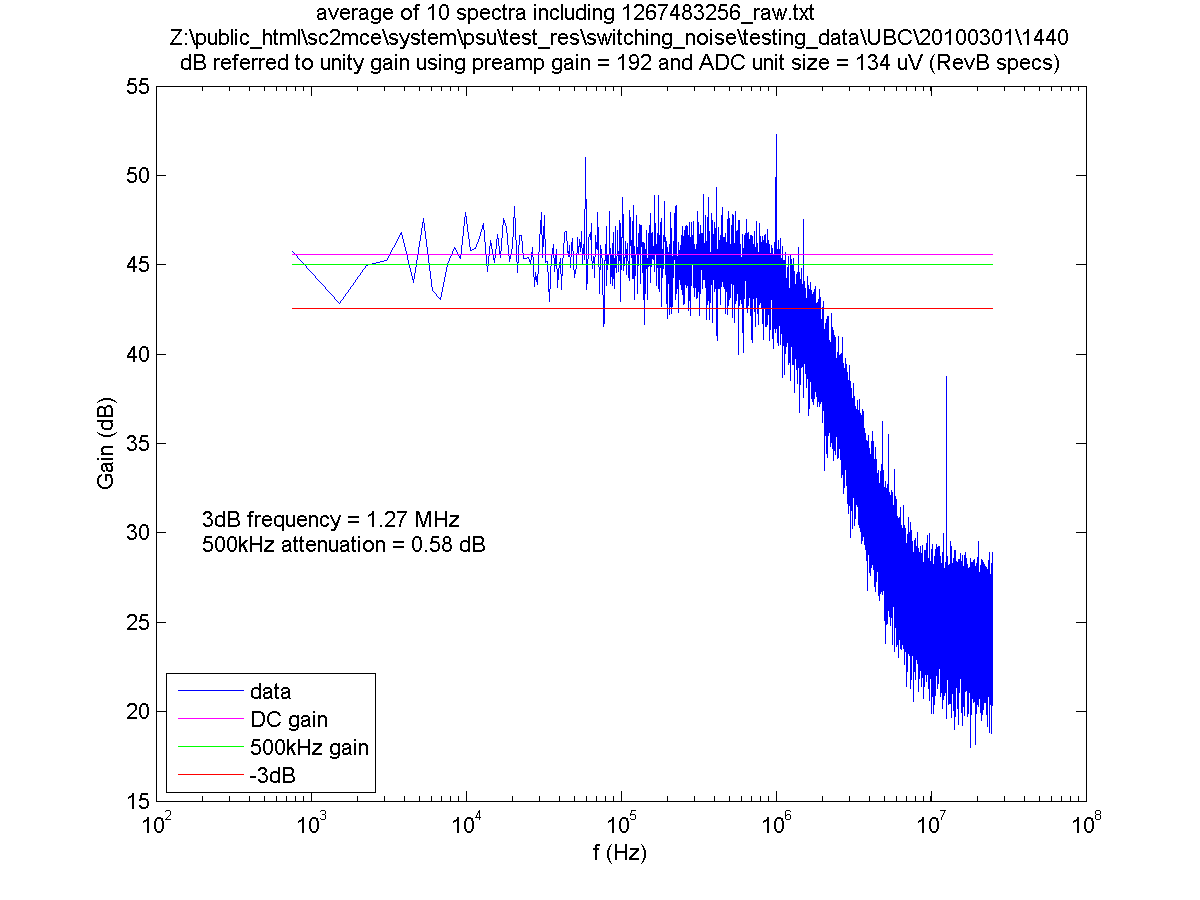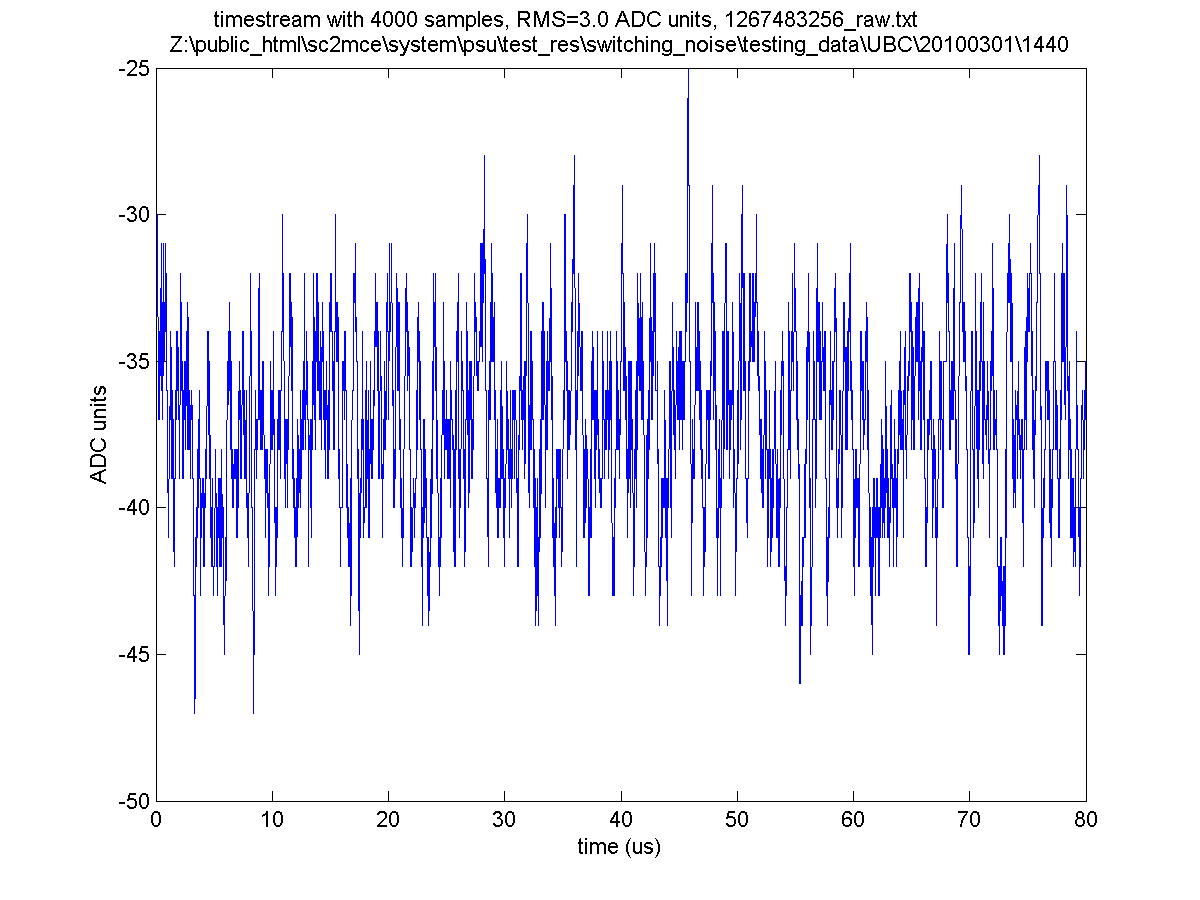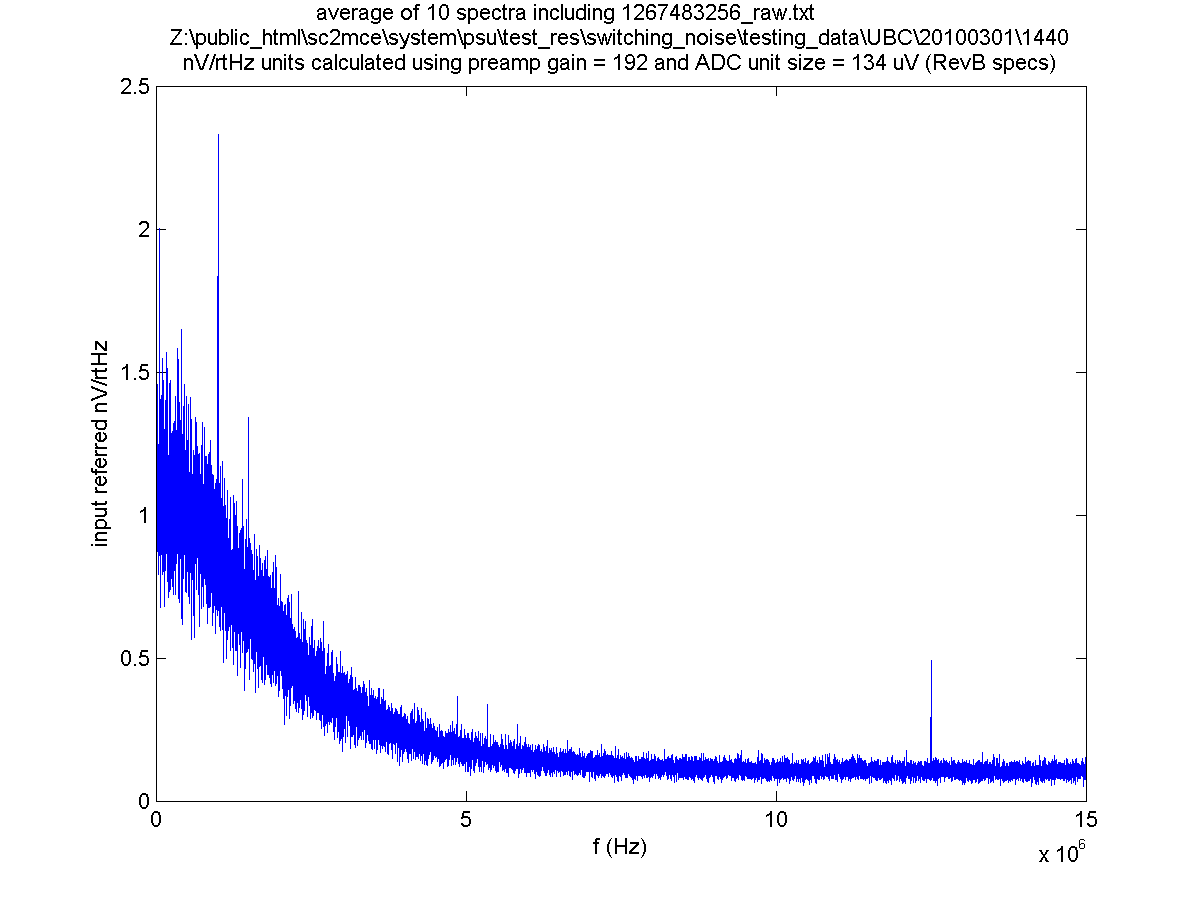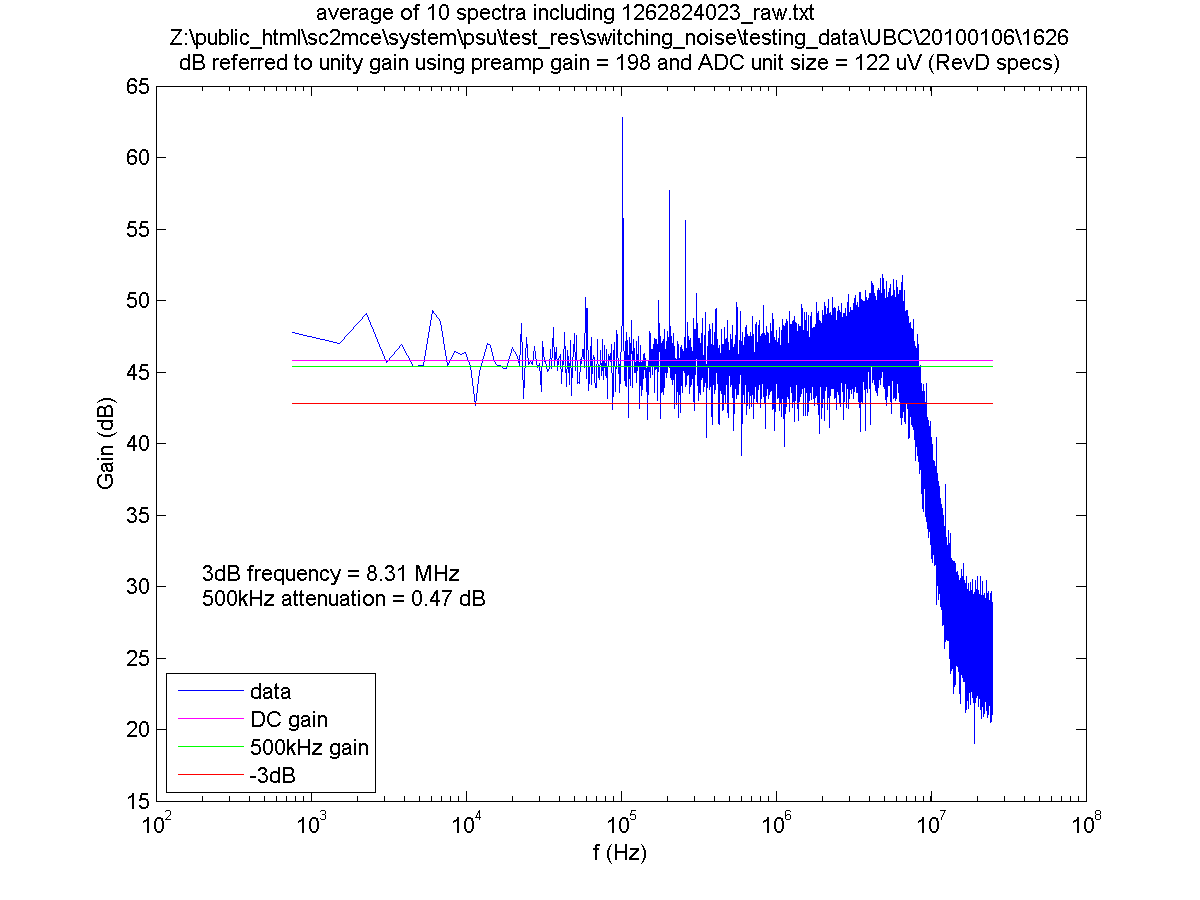Difference between revisions of "Readout Card Preamp Chain"
| Line 22: | Line 22: | ||
== Rev D == | == Rev D == | ||
| − | The gain distribution of Revision B is: first stage 5.54, second stage 6, third stage 6, fourth stage 1, for a total gain of 199. The card uses a 16 bit ADC with a 2.0 V reference, leading to a LSB size of 122 uV | + | The gain distribution of Revision B is: first stage 5.54, second stage 6, third stage 6, fourth stage 1, for a total gain of 199. The card uses a 16 bit ADC with a 2.0 V reference, leading to a LSB size of 122 uV. Due to the slightly higher early stage gains, an internal opamp resonance of the AD797 used in the first two stages appears in the gain curve shape, resulting in the rise above DC gain in the MHz range before roll off. The filter cutoff frequency is nominally about 8 MHz. The measured noise was about 7.9 ADC units, although this appears to include some significant external noise in the kHz range. |
Test results using a Revision D card are shown below. | Test results using a Revision D card are shown below. | ||
Revision as of 16:18, 2 March 2010
The readout card preamp chain consists of four stages of amplification which provide gain and act as a low pass filter. Six RC poles are included in the chain and act together to give a steep roll off which limits out of band noise. The exact pole locations and filter cut off frequency depends upon the particular read out card revision, but the basic topology is consistent across all revisions up to the latest revision (D). This topology consists of two initial low noise amplifier stages each with a single RC pole in their respective feedback loops, followed by a third stage of gain which also includes another RC pole in its feedback loop, and finally a differential ADC driver which has symmetric RC poles on both the positive and negative outputs. There is also a low pass RC filter between the first and second stages and third and fourth stages.
The test results below were produced by collecting raw data by sampling at 50 MHz, with the cold electronics replaced by test boards which short all of the instrument backplane lines with 50 ohm resistors.
Rev B9
The gain distribution of Revision B is: first stage 4, second stage 4, third stage 6, fourth stage 2, for a total gain of 192. The card uses a 16 bit ADC with a 2.2 V reference, leading to a LSB size of 134 uV. The 3dB cutoff frequency of the chain is about 6 MHz. The noise of the preamp chain is approximately 5.4 ADC units.
Test results using a Revision B9 card are shown below.
Rev B10
The gain distribution of Revision B is: first stage 4, second stage 4, third stage 6, fourth stage 2, for a total gain of 192. The card uses a 16 bit ADC with a 2.2 V reference, leading to a LSB size of 134 uV. To reduce out of band noise, the filter cutoff frequency was reduced in this revision to about 1.3 MHz. This should reduce the total noise across the full band of the ADC (samples at 50 MHz, so all noise is folded below 25 MHz) by approximately Sqrt(1.3)/Sqrt(6), or a little bit less than 50%. The measured noise was about 3.0 ADC units. The maximum signal frequency of interest (500 kHz) is attenuated by about 0.6 dB by the filter compared to DC gain.
Test results using a Revision B9 card are shown below.
Rev D
The gain distribution of Revision B is: first stage 5.54, second stage 6, third stage 6, fourth stage 1, for a total gain of 199. The card uses a 16 bit ADC with a 2.0 V reference, leading to a LSB size of 122 uV. Due to the slightly higher early stage gains, an internal opamp resonance of the AD797 used in the first two stages appears in the gain curve shape, resulting in the rise above DC gain in the MHz range before roll off. The filter cutoff frequency is nominally about 8 MHz. The measured noise was about 7.9 ADC units, although this appears to include some significant external noise in the kHz range.
Test results using a Revision D card are shown below.
